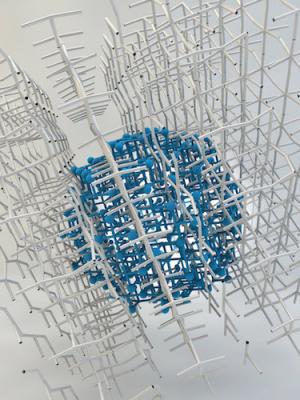Perovskites assist in breaking bandwidth record for data communication
Researchers from the King Abdullah University of Science and Technology (KAUST) have designed a system that uses an innovative color converter based on luminescent materials known as phosphors, which are commonly used in LED lights, and combines them with nanocrystals of perovskite. This system has achieved record bandwidth, providing a data transmission rate of 2Gbit per second.

The major achievements in this work are breaking the record for data communication using visible light and, even more impressively, producing white light with a very high color-rendering index of 89, by designing a special color converter based on hybrid perovskite nanocrystals. The work demonstrates white light as both a lighting source and a system for ultra-high-speed data communications.




